Star II

Star II

Introduction
No Cooling Limit
Evolution of Density Profile
Rapid Cooling Limit
Evolution of Density Profile
Evolution of Lagrangian Matter Tracers
Evolution of the Lapse Function
Black Hole and Disk Parameters
Introduction

Fig. 1-1 Initial Shape of the Rotating Star
Evolution is performed on a 128x128 grid, with outer boundaries at r/M=17.5, where M is the initial mass of the star. In this simulation, the spin parameter is J/M2=0.85, and M0/M0,sup=1.21 where M0,sup is the mass limit for uniformly rotating polytropes. Figure 1.1 shows the initial shape of the star.
Evolution of the Density Profile (No Cooling Limit)
In the meridional and equatorial clips, the density is plotted on a logarithmic scale normalized to the central density of the star at the start of evolution (Fig. 2-1).
The evolution of Star II is very similiar to Star I except Star II takes considerably longer to collapse. The star becomes dynamically unstable leading to catastrophic collapse at t/M=6965 (128.5Prot) as shown in Figure 2-3. Like Star I, a massive ambient disk is formed (Fig. 2-4).
Meridional Plane
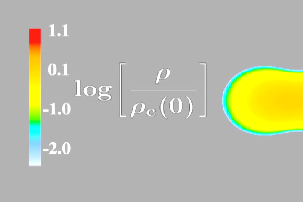 Fig. 2-1 Color code for density profile |
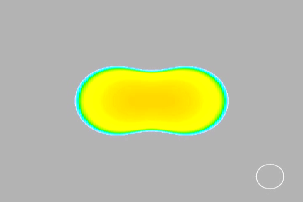 Fig. 2-2 Density profile at t/M = 0 |
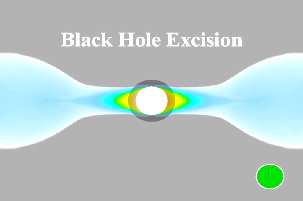 Fig. 2-3 Black hole excision at t/M = 6970 |
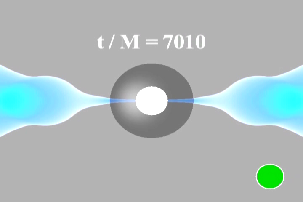 Fig. 2-4 Density profile at t/M = 7010 |
Equatorial Plane
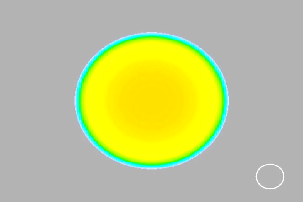 Fig. 2-6 Density profile at t/M = 0 |
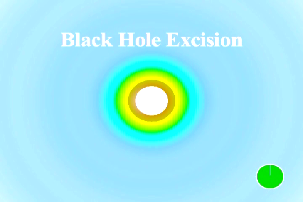 Fig. 2-7 Black hole excision at t/M = 6970 |
 Fig. 2-8 Density profile at at t/M = 7010 |
Evolution of the Density Profile (Rapid Cooling Limit)
In the meridional and equatorial clips, the density is plotted on a logarithmic scale normalized to the central density of the star at the start of evolution (Fig. 3-1).
As in the no cooling limit, the inner core contracts and the outer layers expand in a quasi-stationary manner. The core then collapses dynamically to a black hole and leaves behind a massive accretion disk. Since there is no net viscous heating, the whole process occurs quicker than in the no cooling limit. The dynamical collapse occurs at t/M=2130.
Meridional Plane
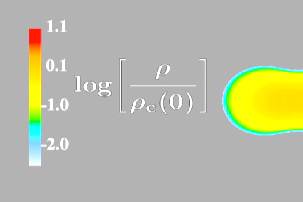 Fig. 3-1 Color code for density profile |
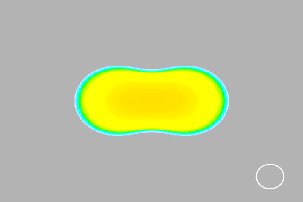 Fig. 3-2 Density profile at t/M = 0 |
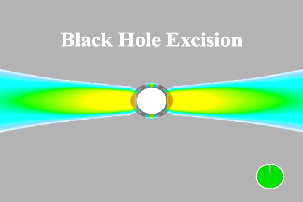 Fig. 3-3 Black hole excision at t/M = 2130 |
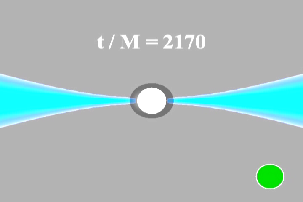 Fig. 3-4 Density profile at t/M = 2170 |
**A zoom occurs just prior to excision so visual inspection should not be used to compare sizes.
Equatorial Plane
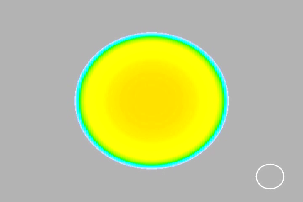 Fig. 3-5 Density profile at t/M = 0 |
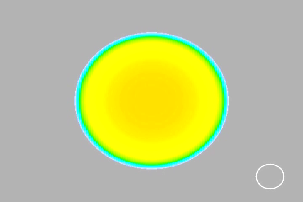 Fig. 3-6 Black hole excision at t/M = 2130 |
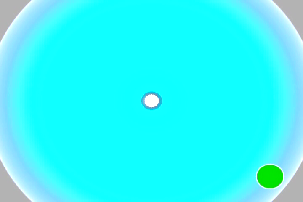 Fig. 3-7 Density profile at t/M = 2170 |
Evolution of Lagrangian Matter Tracers (Rapid Cooling Limit)
In these clips, we place 50,000 Lagrangian matter tracers that represent fluid elements. The initial distribution of Lagrangian tracers is proportional to the initial mass density. We then calculate the trajectories of the tracers by integrating fluid velocities. The particles are also color-coded according to the density at their current location. The color-coding is the same as the density profile clips (Fig. 3-1). The dark grey volume is the apparent horizon and the white volume is the area excised.
Meridional View
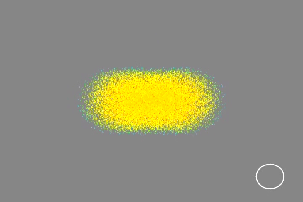 Fig. 4-1 Lagrangian matter tracers at t/M = 0 |
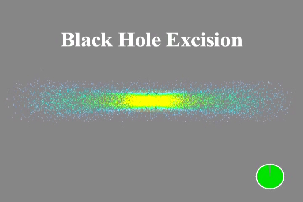 Fig. 4-2 Black hole excision at t/M = 2130 |
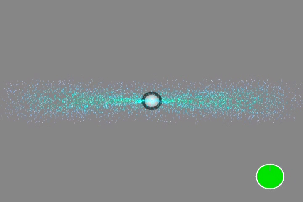 Fig. 4-3 Lagrangian matter tracers at t/M = 2170 |
Equatorial View
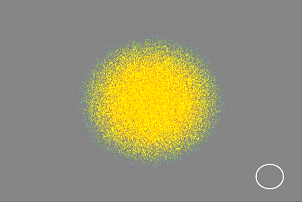 Fig. 4-4 Lagrangian matter tracers at t/M = 0 |
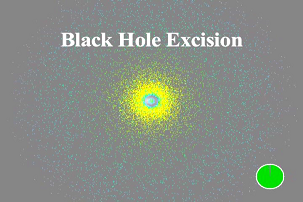 Fig. 4-5 Black hole excision at t/M = 2130 |
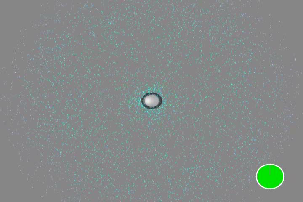 Fig. 4-6 Lagrangian matter tracers at t/M = 2170 |
Evolution of the Lapse Function (Rapid Cooling Limit)
This clip shows the evolution of log(α) for the equatorial plane of the star. The excision boundary is denoted by a white ringon the surface (Fig. 5-3). Anything inside of the white ring is excised. Note that in the adopted time coordinate log(α) stays finite on the excision boundary (Fig. 5-4), gauranteeing a "horizon penetrating" lapse, necessary for excision.
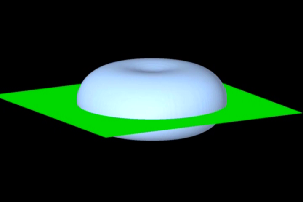 Fig. 5-1 Initial star with equatorial plane |
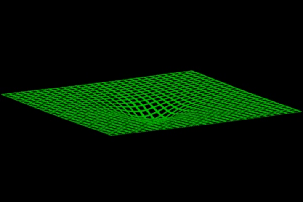 Fig. 5-2 Lapse function at t/M = 0 |
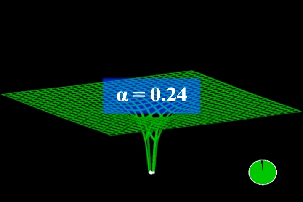 Fig. 5-3 Black hole excision at t/M = 2130 |
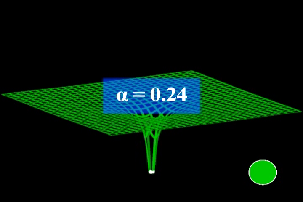 Fig. 5-4 Black hole excision at t/M = 2170 |
Black Hole and Disk Parameters (Rapid Cooling Limit)
The star collapses to form a black hole surrounded by a massive disk. Listed in the table below are the relative parameters including the spin of the black hole and disk, and the rest mass of the black hole and disk. These parameters show the formation of substantially massive disk.
| JD/J | 0.36 |
| JBH/J | 0.64 |
| M0,D/M0(0) | 0.10 |
| M0,BH/M0(0) | 0.90 |
| JBH/M0,BH2 | 0.56 |
| JBH/Mirr2 | 0.88 |
Last Updated 12 Nov 14 by SEC